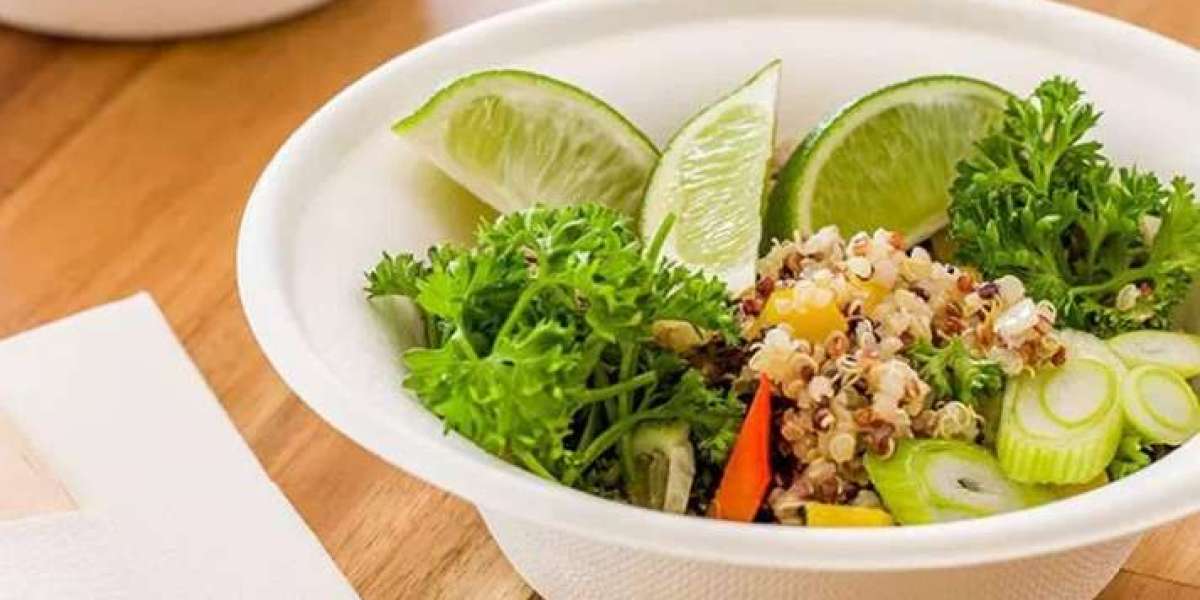In a world drowning in plastic waste, the search for sustainable alternatives is no longer optional—it’s urgent. Among the most promising solutions rising to the surface are sugarcane bagasse bowls. These bowls, crafted from the fibrous residue left after extracting juice from sugarcane, are changing the landscape of disposable tableware. They’re strong, biodegradable, affordable, and perhaps most importantly, they don’t destroy the planet in the process of doing their job.
What Exactly Is Bagasse?
Bagasse is the dry pulpy residue left behind after sugarcane stalks are crushed to extract their juice. For decades, this byproduct was seen as agricultural waste. It was either burned, contributing to air pollution, or left to rot. But as environmental concerns grew and bioplastics gained traction, innovators began to see bagasse differently: not as trash, but as raw material with serious potential.
Instead of sending it to landfills or incinerators, manufacturers now repurpose this abundant fiber to create biodegradable products. Sugarcane bagasse bowls are a standout result. They're not only functional but also represent a full-circle approach to sustainability by turning waste into something useful.
The Rise of Sugarcane Bagasse Bowls
Single-use plastics have been under fire for decades. Countries are banning them. Cities are taxing them. Consumers are rejecting them. In this climate, compostable, plant-based alternatives are gaining momentum. Sugarcane bagasse bowls fit this niche perfectly.
Unlike traditional plastic or Styrofoam bowls that take hundreds of years to decompose, these bagasse-based products break down naturally in just 60 to 90 days in industrial composting settings. Even in home composting environments, they degrade far faster than any plastic alternative. This makes them ideal for food services, events, takeout packaging, and even everyday home use.
Restaurants, caterers, and eco-conscious brands are turning to bagasse tableware not only for its environmental perks but also for its quality. Bagasse bowls can withstand hot soups, greasy curries, and even cold desserts without getting soggy or collapsing. They're microwave-safe, freezer-safe, and grease-resistant—a combination of features that makes them practical beyond their sustainability appeal.
Eco-Benefits that Matter
Here’s where sugarcane bagasse bowls really earn their stripes:
1. 100% Biodegradable and Compostable
These bowls break down quickly without leaving behind toxic residue. That’s a stark contrast to plastic, which pollutes oceans and infiltrates food chains with microplastics.
2. Made from Renewable Resources
Bagasse is a byproduct of an already harvested crop—sugarcane. It doesn’t require new land, water, or fertilizer to produce. No forests are cut down. No fossil fuels are burned in sourcing the material. It’s a brilliant use of what's otherwise considered waste.
3. Reduced Carbon Footprint
Manufacturing bagasse bowls emits significantly less carbon dioxide compared to plastics. Plus, using agricultural waste helps offset the emissions that would have come from burning or landfilling the residue.
4. Supports Circular Economy
Bagasse products promote a cradle-to-cradle lifecycle. They're born from waste and return to the earth, enriching the soil instead of polluting it.
From Farm to Table: How They're Made
The journey of a sugarcane bagasse bowl starts on a sugar plantation. Once the cane is harvested and crushed for juice, the leftover pulp is collected and dried. The fiber is then refined and mixed with water to form a pulp slurry. This slurry is poured into molds and pressed under high heat and pressure to form various shapes—like bowls, plates, and containers.
Once molded, the bowls are trimmed, sterilized, and packaged for distribution. The entire process is low-energy and minimally invasive compared to the manufacturing of petroleum-based plastic.
Versatility in Design and Use
Sugarcane bagasse bowls come in all sizes and shapes—from 8-ounce soup bowls to 32-ounce salad containers. Some even come with matching bagasse lids. The neutral, matte finish gives them a natural and elegant appearance, suitable for both casual dining and upscale events.
Food delivery businesses love them because they hold up during transport. Event planners choose them because they align with their zero-waste goals. Even schools and hospitals are shifting to bagasse tableware as part of broader sustainability commitments.
Challenges and the Role of the Bagasse Supplier
Despite the clear environmental benefits, bagasse bowls still face challenges—namely cost and supply chain capacity. They can be more expensive than mass-produced plastic options, and demand often exceeds supply.
This is where a reliable bagasse supplier becomes critical. Suppliers who invest in efficient manufacturing, fair labor practices, and high product quality help bridge the gap between sustainability and scalability. Some even work directly with sugar mills to secure consistent access to raw material and reduce transportation emissions in the process.
Choosing the right supplier can determine whether a company’s sustainability pledge turns into real impact or just marketing fluff.
Regulations Are Helping
Governments around the world are stepping up. The European Union, Canada, India, and several U.S. states have all introduced bans or restrictions on single-use plastics. These policies are fueling demand for alternatives like sugarcane bagasse bowls.
As legislation tightens, more manufacturers and consumers will be forced to switch—and that’s good news for the planet. The wider the adoption, the faster prices will drop, making bagasse products more accessible to everyone.
The Bottom Line
Sugarcane bagasse bowls aren’t just a trend. They represent a serious move toward smarter, more responsible consumption. They offer a way out of the plastic problem without compromising on function, cost-effectiveness, or style.
For any business in the food industry—or for individuals trying to reduce their carbon footprint—choosing bagasse isn’t just a good idea. It’s the right move. And with more bagasse suppliers and manufacturers stepping up to meet demand, the future of compostable, plant-based tableware looks bright.
As more people wake up to the urgency of the environmental crisis, simple choices like what kind of bowl we eat from will carry more weight. With sugarcane bagasse bowls, that choice is no longer between convenience and conscience. It’s both.

![[Order Now] Rolling Hills Farms Australia: Side Effects, Price, Where To Buy?](https://sathiharu.com/upload/photos/2025/04/wxkdiCFcqQxkZ4FAWaDs_17_6ec8e57c89783471e9d0221dffd9c230_image.jpg)

